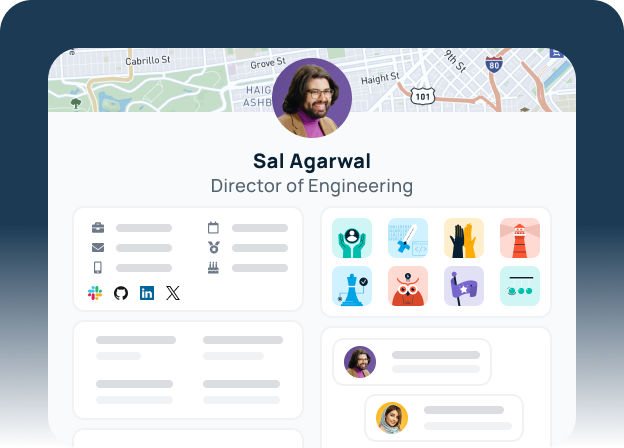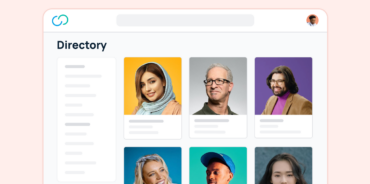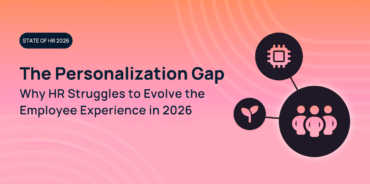Gamification is no longer just a trendy HR buzzword—it’s become one of the most effective ways for organizations to inspire, motivate, and retain their people. From recognition programs to learning platforms and internal contests, gamification taps into human psychology to encourage participation, reward positive behaviors, and build stronger team connections.
In today’s workplace, where employees juggle high expectations and constant change, engagement isn’t optional. Disengaged employees are less productive at work, less satisfied, and more likely to leave. On the other hand, engaged employees show up with energy, creativity, and loyalty. The challenge for HR leaders and managers is figuring out how to spark that engagement consistently.
That’s where gamification comes in. By applying game-like elements such as points, badges, levels, and leaderboards to everyday tasks, organizations can transform routine activities into meaningful experiences that drive both performance and morale.
But what does gamification for employee engagement really mean? And how can your organization put it into practice without it feeling like a gimmick?
This guide explores the core concepts, key benefits, and real-world examples of gamification in action. You’ll also discover best practices for building your own gamified programs, plus tools that can help you make it all work.
What Is Gamification for Employee Engagement?
At its simplest, gamification is the use of game elements in non-game environments. Instead of just telling employees what to do or expecting participation, organizations make the experience fun, rewarding, and motivating.
Here’s what that might look like in a workplace:
✅ Completing training modules → Earn a digital badge.
✅ Reaching a quarterly goal → Climb a leaderboard.
✅ Helping a teammate → Collect peer-recognition points.
It’s the same psychological pull that makes people keep playing video games, track their fitness streaks, or celebrate loyalty rewards. Gamification triggers both intrinsic motivators (like autonomy, mastery, and connection) and extrinsic motivators (like recognition and rewards).
When done thoughtfully, it turns ordinary work into engaging experiences.
Why Gamification Works for Employee Engagement
Gamification works because it aligns with how humans are wired. People like to achieve goals, see progress, and feel valued. When these needs are met at work, engagement skyrockets.
Here are four reasons why gamification is so effective in boosting employee engagement:
1. Motivation Through Recognition
Recognition is one of the strongest drivers of employee satisfaction. Gamification makes recognition visible and ongoing. Whether it’s a badge for mentoring a colleague, a digital high-five for problem-solving, or a spotlight on a leaderboard, these moments show employees that their contributions matter.
When recognition is baked into everyday activities, motivation isn’t left to chance—it becomes part of the culture.
2. Boosts Learning and Development
Traditional training often feels dry. Gamification changes that by breaking learning into challenges, levels, or streaks. Employees who can track progress and earn rewards are more likely to complete onboarding, compliance training, or upskilling courses.
Imagine onboarding where new hires earn badges for finishing modules, unlocking levels for mastering skills, and receiving recognition from peers. Suddenly, training feels like an achievement rather than a chore.
3. Builds a Sense of Belonging
Team challenges create social connections. Whether it’s a group contest, a recognition platform where coworkers give kudos, or a team leaderboard celebrating wins, gamification fosters belonging.
This sense of community reinforces a positive company culture—something employees crave, especially in hybrid and remote workplaces.
4. Encourages Healthy Competition
Gamification thrives on friendly competition. By tracking achievements and celebrating wins, employees push themselves—and one another—to excel. Unlike cutthroat environments, gamification channels competition into collaboration and growth.
People are more likely to go the extra mile, not because they have to, but because they want to.
Examples of Gamification in Action
The best way to understand gamification is to see it in practice. Organizations across industries are finding creative ways to weave game-like mechanics and rewards systems into everyday work, recognition, and learning. Here are some popular examples:
Goal Tracking and Productivity Games
Sales reps can climb leaderboards for hitting quotas. Customer support teams might earn points for fast response times or high satisfaction scores. Project teams can celebrate milestones with weekly or monthly recognition.
These systems boost motivation and make progress visible, which helps employees stay focused and energized.
Recognition and Rewards Programs
Peer-to-peer recognition platforms allow employees to give each other badges or kudos points for collaboration, leadership, or creativity. Over time, these rewards systems can be tied to perks, public shoutouts, or profile badges. Recognition becomes part of the daily workflow rather than an occasional gesture.
Gamified Learning and Training
Learning platforms often use points, streaks, or levels to encourage participation. Employees might unlock badges for completing compliance modules, advance to new levels as they upskill, or maintain streaks for consistent progress. These rewards systems make training more interactive and increase retention of new knowledge.
Celebrating Milestones
Gamification can make personal and professional milestones more special. Work anniversaries, birthdays, or team achievements can be celebrated with digital badges, automated shoutouts, or group challenges. Tools like GoProfiles allow organizations to build rewards systems that ensure every milestone feels recognized and valued.
Team Challenges and Collaboration Games
Some organizations set up cross-functional challenges where teams earn collective points for solving problems, submitting ideas, or innovating together. These initiatives encourage employee collaboration, strengthen culture, and create shared experiences that connect people across departments.
Gamification Tools That Boost Engagement
Choosing the right platform is critical if you’re ready to experiment with gamification. The best tools integrate into your existing workflows, making gamification seamless instead of disruptive.
Here are some categories worth exploring:
- Recognition Platforms — Tools like GoProfiles enable peer-to-peer recognition, work anniversary celebrations, and badges for achievements. They keep recognition front and center in daily work.
- Learning Management Systems (LMS) — Platforms such as Kahoot!, 360Learning, and Lessonly use gamification to drive learning engagement and make training interactive and enjoyable.
- Performance Platforms — Solutions like Kazoo, Lattice, and Betterworks add game-like elements to performance tracking, goal setting, and feedback cycles.
Pro Tip: For a deeper dive into the different categories and examples, check out our guide to types of gamification software for employee engagement.
Tips for Implementing Gamification Strategically
Gamification only works if it’s designed with care. Done poorly, it can feel forced or superficial. Done well, it creates lasting engagement.
Here are some best practices for success:
1. Start with Clear Goals
Ask yourself: What behavior do you want to encourage? Is it completing training, collaborating more, or hitting performance targets? Tie gamification directly to these outcomes so it drives real impact.
2. Make It Inclusive
Not everyone is motivated by competition. Some thrive on collaboration, others on creativity. Design programs that appeal to different personality types. For example, include rewards for teamwork and innovation, not just leaderboard rankings.
3. Keep It Transparent
Gamification loses trust if employees don’t understand the rules. Be transparent about how points, badges, or leaderboards work. Make progress visible so employees see the connection between effort and reward.
4. Measure and Iterate
Like any strategy, gamification should evolve. Track participation, engagement, and performance over time. Collect employee feedback and adjust as needed. The best programs are flexible and responsive.
5. Balance Fun with Purpose
Gamification isn’t about playing games—it’s about motivating real behaviors. Make sure the “fun” elements reinforce meaningful goals, not distract from them.
The Business Benefits of Gamification
Beyond boosting morale, gamification delivers measurable business outcomes. Companies that implement gamification often report:
- Higher retention rates – Employees who feel recognized and engaged are less likely to leave.
- Improved performance – Clear goals, progress tracking, and rewards encourage productivity.
- Stronger culture – Recognition and collaboration foster belonging and positivity.
- Faster learning – Gamified training leads to quicker onboarding and more effective upskilling.
In short, gamification isn’t just about employee happiness—it’s about driving business results through people.
Common Mistakes to Avoid
While gamification is powerful, it’s not foolproof. Avoid these pitfalls:
- Overemphasizing competition – Too much focus on leaderboards can alienate non-competitive employees.
- Neglecting feedback – Don’t just set it and forget it. Gamification should evolve based on employee input.
- Forgetting rewards – Badges and points only work if they’re meaningful. Pair them with real recognition or incentives.
- Making it too complicated – Engagement will drop if the rules are confusing. Keep it simple and intuitive.
When used thoughtfully, gamification for employee engagement isn’t gimmicky—it’s transformational. Organizations can inspire motivation, build stronger cultures, and retain top talent by weaving game mechanics into recognition, learning, performance, and collaboration.
Whether you’re celebrating milestones, encouraging continuous learning, or boosting team productivity, gamification adds energy and purpose to the everyday work experience.
Ready to spark more engagement across your teams?
GoProfiles makes it easy to celebrate wins, highlight contributions, and bring the fun back into work.
Try GoProfiles free today and see how gamification can transform employee engagement.
Build a culture of connection and recognition with GoProfiles
Try for free

















